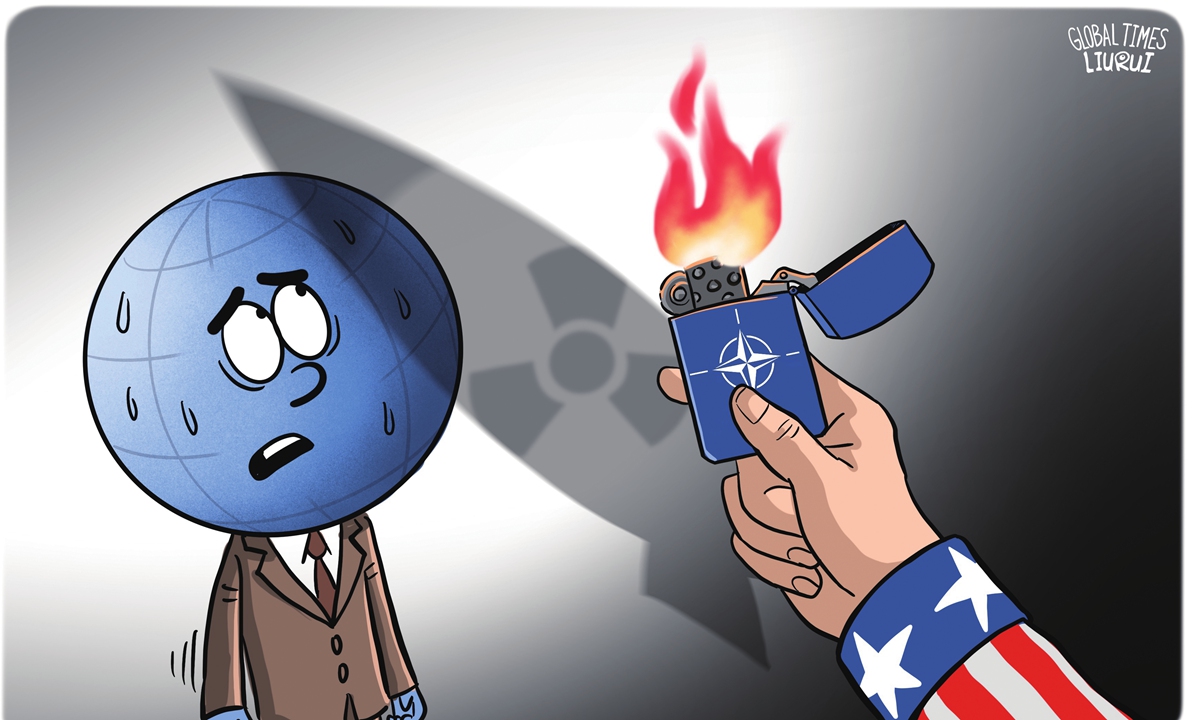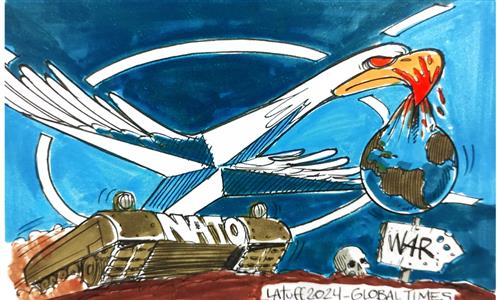
Illustration: Liu Rui/GT
NATO began its annual nuclear exercise "Steadfast Noon" on Monday. According to NATO officials, the exercise will last about two weeks, with approximately 2,000 military personnel taking part in drills simulating missions where warplanes carry US nuclear warheads. Experts believe the primary goal of NATO's nuclear exercises is to "flex its muscles." NATO's frequent displays of strength are likely to raise security concerns, potentially triggering an arms race and further exacerbating the Russia-Ukraine conflict.
This exercise will be NATO's third "Steadfast Noon" nuclear weapons drill since the escalation of the Ukraine crisis in 2022. Unlike previous ones, it takes place against the backdrop of Russian President Vladimir Putin's updated nuclear policy in September. Although NATO officials have emphasized that the exercise isn't a response to any recent declarations from Moscow, it is clear that NATO is intent on exerting nuclear deterrence against Russia by showcasing its nuclear capabilities.
Cui Heng, a research fellow at the Center for Russian Studies at East China Normal University, told the Global Times that the purpose of NATO's nuclear exercises is to demonstrate its strength to Russia and the world. As the Russia-Ukraine conflict nears potential negotiations, all parties are seeking to build leverage to gain an advantage at the negotiation table. Clearly, NATO's nuclear exercises serve as a critical bargaining chip for the talks.
Besides of further worsening the current stalemate in the Russia-Ukraine conflict, NATO's nuclear exercise could also introduce numerous risks and hidden dangers. First of all, it will make Europe's geopolitical security situation even more complex. If Europe remains under the constant threat of a nuclear shadow, countries will feel increasingly on edge. On the other hand, Cui believes greater geopolitical pressure from NATO is likely to heighten Russia's security anxieties, potentially leading to an escalation of tensions in European security.
UN Secretary-General Antonio Guterres recently stated, "The nuclear threat is not confined to history books," and "nuclear weapons remain a clear and present danger to humanity, once again appearing in the daily rhetoric of international relations." In this context, NATO's actions are increasing the threat of nuclear war and presenting a great danger to humanity.
In recent years, NATO has consistently intensified its nuclear exercises, citing increased external threats as justification. According to Newsweek, the US has deployed B61 nuclear gravity bombs in Europe as part of NATO's nuclear sharing arrangements, where the nukes remained under the custody and control of the US military. They would be armed on allied fighter jets in the event of a nuclear conflict.
This type of nuclear bomb has a high level of combat readiness, and the US' move aligns with its ongoing goals to lower the threshold for the use of nuclear weapons.
The victim of the current nuclear warfare risks will be not limited to the US, Russia or Europe; it is also causing the world to "break out in a cold sweat." How to manage and control this nuclear crisis through communication and coordination and to avoid the use of nuclear weapons, especially tactical nuclear weapons, has become a focal point for the international community.
Preventing nuclear war is a goal that all countries need to work toward collectively. As a product of Cold War mentality and a tool for bloc confrontation, NATO and its nuclear sharing arrangement has long outlived its relevance and should have been retired with the end of the Cold War. Meanwhile, NATO's nuclear exercises are pushing the world into a more dangerous situation, warranting the vigilance of all people around the world.

